Watch experts uncover Zuul, the new dinosaur going on display at the ROM in December
It's hard to imagine any operation involving 4.5 tonnes of rock encasing an animal that's been dead for 76 million years as delicate.
But that's exactly how a team of experts at Research Casting International (RCI) approached the pristinely preserved specimen of a newly discovered species of dinosaur on Tuesday — as they worked to slice, mount and flip the huge rock without damaging it, so they could continue preparing the other side of the fossil.

"It's really exciting," said Peter May, who founded RCI back in 1987. "In my career, I don't think anyone's ever flipped a block like this, this is probably a first, just because the block is so big."
All this happened just three months before the dinosaur, known as Zuul crurivastator, is expected to be put on display at the Royal Ontario Museum (ROM).
Fortunately, after a few hiccups, the flip succeeded.
Here's a sneak peak at the process, which took place on Tuesday.
New species of dinosaur
Zuul crurivastator, an armoured dinosaur, or ankylosaur, was found in Havre, Montana in May 2014.
The scientists who discovered the fossil named it Zuul because they thought its head looked like that of the villain of the same name in Ghostbusters, the hit film released in 1984.
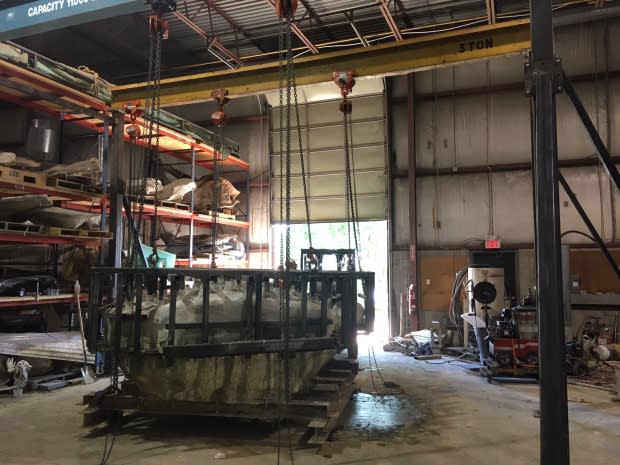
The second part of the name means "destroyer of shins," because it has a powerful, sledgehammer-like tail with a large knob of bone at the end. Researchers believe Zuul used the tail to strike predators in the legs.
When it lived, Zuul would've been about 6.5 metres in length and would have weighed two to three tonnes, according to David Evans, curator of vertebrate palaeontology at the ROM.
It was covered in armour plates to protect it from predators. It even had armour in its eyelids, according to Evans.

Flipping a fossil
The team at RCI has already prepared the head and tail.
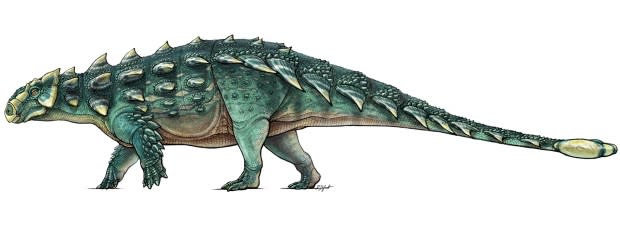
This year, they cleared rock and debris from the top of what was originally a 16-tonne rock, revealing Zuul's body from the neck area to the hips.
To get to the other side, they decided to cover and protect what they'd already prepared, carefully slice the rock in half, slide the bottom half out and then flip the somewhat lighter top chunk over.
Matt Fair, production and plant manager at RCI, said they spent three months planning the flip.
"We've worked with something maybe half the size," he said. "The crane we knew is good, but because we're dealing with an organic shape and trying to make steel go through it and work the way we want it to, it doesn't always work."
Evans said near the end of the flip, his heart was beating a mile a minute.
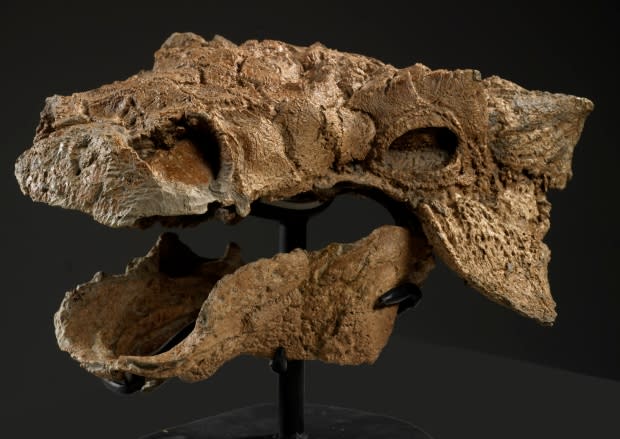
"It really is the moment of truth, whether you're going to have a perfect specimen at the end of the day or whether you're going to have rubble, and today it went as good as I think we ever could've expected it."
'Exceptionally rare'
With the flip complete, they can now start working on Zuul's opposite side.
They have high hopes for what they'll find, as they've already declared this dinosaur one of the most complete ever discovered, including its soft tissue.
"This much skin preservation over any dinosaur is exceptionally rare," Evans said. "We have skin that's covering a huge amount of this animal, and in that skin are the armour plates that really make ankylosaurs famous."
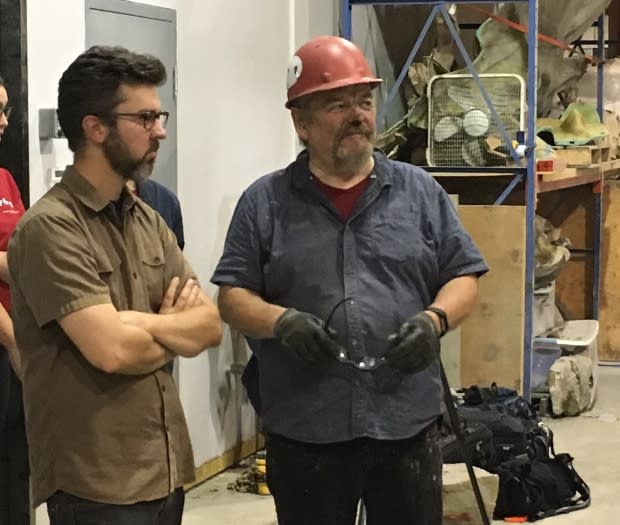
Evans said they can't quite tell how Zuul died, but they do know the dinosaur was buried very rapidly, which is how the skin was protected from decomposition and scavengers.
That layer of protection also produced some surprising finds in the bottom half of the giant rock.
"We found things like turtles and crocodiles, bits and pieces of duck bill and horn dinosaurs, but in that layer we also found an associated skeleton of the main predator of this armoured dinosaur, a tyrannosaur called Gorgosaurus," Evans said.
These surprises are why the original team who found Zuul took such a large rock specimen.
'Zuul: Life of an Armoured Dinosaur'
Zuul and its environment will be shown off in the ROM's exhibit, Zuul: Life of an Armoured Dinosaur, opening on Dec. 15.
In a release, the ROM said the exhibit will take visitors beyond the "museum walls to the badlands of Montana, in an immersive experience that recreates the Cretaceous world Zuul inhabited."
The exhibit will also include CGI animation, interactive games and, of course, a chance to see Zuul up close.
For Amelia Madill, one of RCI's bone preparators, that's not a lot of time to do her job.
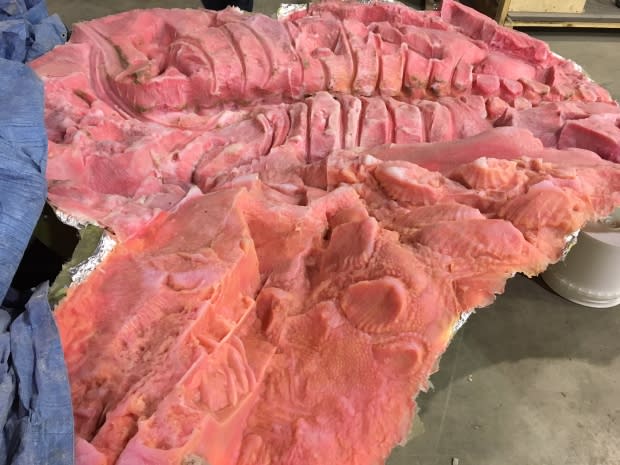
"It's going to take a lot of work, a lot of man power, but I think that's the most fun, right? You get to dig up something that's never been seen before and reveal it to the public."
